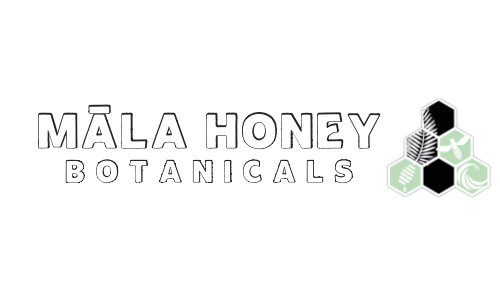
Native Hawaiian Yellow- faced Bee, Nalo Meli Maoli
Share
The Native Hawaiian Yellow-Faced Bee, scientifically known as Hylaeus anthracinus, is a remarkable pollinator native to the Hawaiian Islands. This unique bee species faces numerous challenges, from habitat loss to the impact of invasive species, which have led to its unfortunate placement on the endangered species list. In this blog post, we will delve into the anatomy, genetics, history, locations, and habitat of the Native Hawaiian Yellow-Faced Bee. Additionally, we'll explore the critical role of native pollinators, the reasons behind the bee's endangered status, and ways to support conservation efforts.
Anatomy and Genetics:
The Native Hawaiian Yellow-Faced Bee is a solitary bee, meaning it does not form colonies like honeybees. With a distinctive yellow face and dark body, it measures about 5 to 10 millimeters in length, much smaller in comparison to honeybees. Its specialized mouthparts and body structure make it well -adapted for pollination, particularly in native Hawaiian plants. The genetics of this bee play a crucial role in its ability to thrive in the unique ecosystems of the Hawaiian Islands, showcasing the delicate balance between species and their environments.

History and Locations:
Believed to have evolved over millions of years in isolation, the Native Hawaiian Yellow-Faced Bee has become intricately linked with the Hawaiian flora. These bees are primarily found in the higher elevations of the islands, such as the slopes of Mauna Kea and Haleakalā. Their historical presence in these regions reflects a delicate ecological dance that has shaped the biodiversity of Hawaii.
Habitat and Importance of Native Pollinators:
The bee's habitat includes native forests, coastal areas, and volcanic landscapes, where it plays a vital role in pollinating native plants. Native pollinators like the Native Hawaiian Yellow-Faced Bee are essential for the reproduction of many plant species, maintaining the delicate balance of ecosystems and supporting biodiversity. Unfortunately, habitat destruction and the introduction of non-native species pose significant threats to these crucial pollinators.

Native Plants and Foraging Habits:
The Native Hawaiian Yellow-Faced Bee has evolved alongside specific native plant species, forming a crucial relationship in the ecosystem. Some of the key native plants that these bees forage on include:
-
Mamane (Sophora chrysophylla): Found in the dry forests of Hawaii, the mamane tree produces vibrant yellow flowers that attract the Native Hawaiian Yellow-Faced Bee. Pollination by these bees is vital for the reproduction of the mamane tree.
-
Iliahi (Santalum spp.): Also known as Hawaiian sandalwood, iliahi is highly valued for its fragrant wood. The Native Hawaiian Yellow-Faced Bee plays a role in pollinating the small, inconspicuous flowers of iliahi, contributing to the plant's reproduction.
-
Akia (Wikstroemia spp.): Akia, a shrub native to Hawaii, features small, tubular flowers that provide nectar for the bees. The relationship between akia and the Native Hawaiian Yellow-Faced Bee underscores the coevolution of native species in these isolated ecosystems.
Endangered Status and Conservation Challenges:
The Native Hawaiian Yellow-Faced Bee was officially listed as an endangered species in 2016 by the U.S. Fish and Wildlife Service. The primary threats include habitat loss due to urbanization, agriculture, and invasive species. Conservation efforts are underway, but the road to recovery is challenging. Collaboration between scientists, conservationists, and local communities is essential to address these threats effectively.

Ways to Support and Donate:
If you're passionate about preserving the Native Hawaiian Yellow-Faced Bee and its ecosystem, there are several ways to get involved. Supporting local conservation organizations, participating in community restoration projects, and raising awareness about the importance of native pollinators are crucial steps. Additionally, consider donating to reputable organizations dedicated to the conservation of Hawaiian biodiversity.
The Native Hawaiian Yellow-Faced Bee's plight serves as a constant reminder of the interconnectedness of species and the balance required for healthy ecosystems. By understanding the bee's anatomy, genetics, history, locations, and habitat, as well as recognizing the importance of native pollinators, we can actively contribute to conservation efforts. Together, we can ensure the survival of this unique species and safeguard the biodiversity of the Hawaiian Islands for generations to come.
